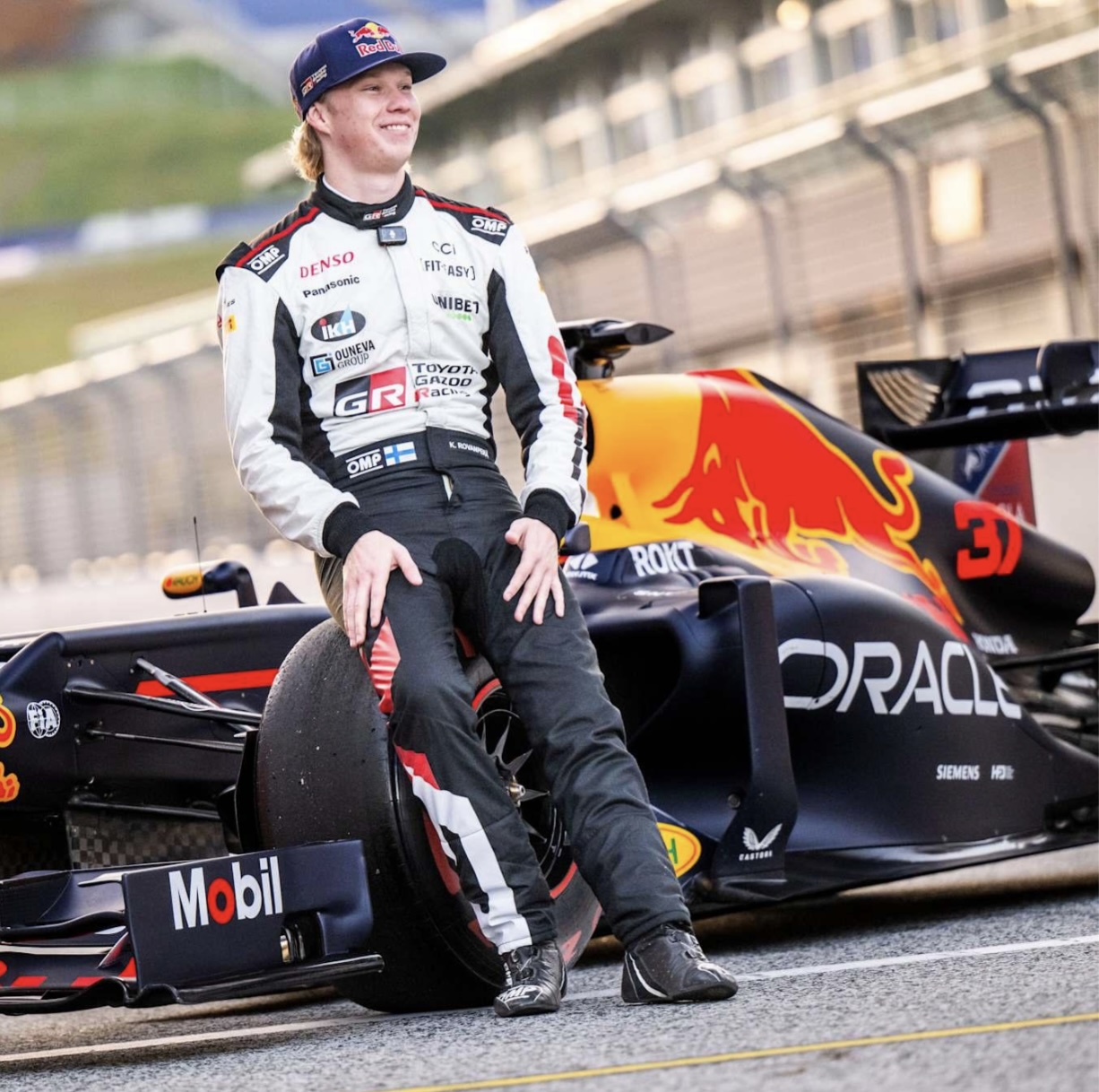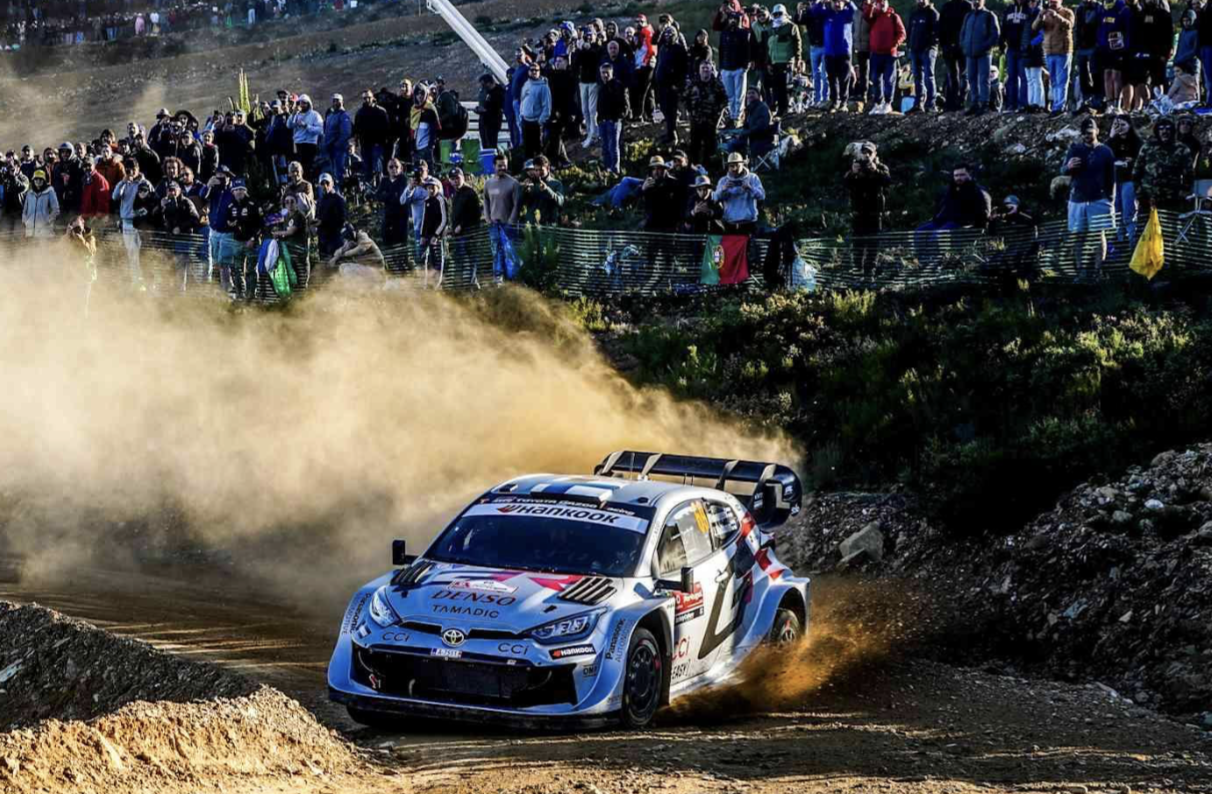
In a turn of events few would have foreseen, two-time World Rally Champion Kalle Rovanperä has decided to retire from the WRC and switch to single-seater racing from 2026. If you’re a Living Sports regular, you’re probably thinking something along the lines of
‘Who is Kalle Rovanperä?’
‘Why should I care?’
And
‘Will the demented scribbler please get back to Formula 1?’
Rest assured, Formula 1 has a part to play here, but first, it's worth examining who Kalle Rovanperä is, why he’s jumping ship, and why this is such a big story. I’m not being hyperbolic when I say Kalle Rovanperä is the rallying world’s answer to Max Verstappen. That’s not to say the two are similar in terms of temperament or methodology, but the manner in which they have risen to the top of their respective sports is not without parallel.
Racing dads? Check. Rovanperä’s father, Harri, competed in the WRC for 13 years and won the 2001 edition of Rally Sweden for Peugeot. Early starts? Check. Rovanperä contested his first rally at the tender age of fourteen. Rapid rise through the ranks? Check. After winning the WRC2 Pro class in 2019 (the rallying equivalent of Formula 2), Rovanperä secured a full-time seat with Toyota Gazoo Racing for 2020. A maiden podium in only his second event confirmed his immense potential. Victory in Estonia the following year made Rovanperä the youngest winner of a WRC event at just 20 years and 289 days old, and while Verstappen fell just short of becoming the youngest ever world champion in his discipline, Rovanperä did not.
His signature blend of searing pace and eerie calm made him nigh on unstoppable in 2022. Six wins and two further podiums saw him clinch the championship with two rounds to spare, the day after his 22nd birthday. Rovanperä repeated the feat in 2023 before switching to a part-time campaign in 2024. During which time he dabbled in the Porsche Carrera Cup and Drift Masters European Championship (those of you who haven’t seen footage of his exploits in the latter are sorely missing out).
He returned to full-time rallying in 2025 but seemed to lack the edge that had elevated him to back-to-back championships. The deletion of hybrid powertrains, as well as the introduction of a new tyre supplier in Hankook, has clearly taken some getting used to. With three rounds to go, Rovanperä sits third in the standings, 21 points off the championship lead, but that hasn’t stopped the 25-year-old from announcing his retirement at the end of this season. Rovanperä will contest the highly competitive Japanese Super Formula Championship in 2026, with the aim of securing a Formula 2 seat for 2027. A plan that begs one obvious question: Is Kalle Rovanperä aiming for Formula 1?
In a word, probably, but to call this task herculean would be a gross understatement. Practically every current F1 driver spent their childhood karting and their adolescence in single seaters, a trend that is also true of even the latest of late bloomers. Damon Hill famously made his F1 debut at 31 years old, but even he was off and running in Formula Ford at 23. Rovanperä has done none of that.
Yes, he’s dabbled in single-seaters and even tested a Red Bull F1 car in 2024, but rallying and Formula 1 are about as different as two motorsport disciplines can get. Never mind the fact that rally drivers have to contend with ice, snow, tarmac, and gravel, as Rovanperä himself has pointed out, “A rally car moves around a lot from the body – F1 is a bit like karting, it doesn’t move much from its suspension.”

There’s also a difference in approach. Most rallies take place over three days and can cover up to 350 kilometres worth of point-to-point stages. The stages themselves can last up to 35 kilometres, and the slightest mistake can ruin an entire weekend’s work. FIA single seater commission president Emmanuele Piro believes that the measured approach required of top-tier rally drivers is worlds away from the flat-out attacking style needed to thrive in circuit racing, and that failure to embrace the former is what causes most circuit racers to crash incessantly when they make the switch to rallying. This was certainly true of Kimi Raikkonen, who famously joined the WRC for two years during his break from F1 in 2010 and 2011. He secured 11 points finishes but was never far from a major shunt.
Whether the inverse is true remains to be seen, as there are very few instances of successful rally drivers making the switch to Formula 1. The likes of Colin McRae, Carlos Sainz, and Sebastien Loeb have all tested F1 machinery, with the latter very nearly securing a drive for Toro Rosso in 2009, but the feasibility of Rovanperä’s switch is up in the air. Super Formula should be a good litmus test, it's a highly competitive series in which the likes of Pierre Gasly and Liam Lawson have competed, and while success there would likely warrant a Formula 2 seat for ’27, Rovanperä would have to win the series and finish at least sixth in Formula 2 in order to earn the required 40 super license points needed for Formula 1.
There’s also the small matter of a seat. If all goes as planned, Rovanperä will be at least 27 by the time of his Formula 1 debut. It’s therefore understandable why some may inquire as to who will give him a drive. Fortunately, Rovanperä has some big names behind him. He is a Red Bull athlete after all, backing that could help land a seat in Formula 2, and if there’s any F1 operation that would be willing to take a punt on an unconventional driver, it's surely Red Bull. Given the ever-changing nature of their driver landscape (Verstappen has had six different teammates in the last seven years, in case you were wondering), the Austrian outfit cannot be ruled out.
Toyota is another viable option; the Japanese giants signed Rovanperä when he was just 19 and have presided over all his WRC success. Toyota has a history in Formula 1 and returned to the sport in 2024 as a partner for Haas. In addition to supplying a fresh injection of funds (which is reported to be worth tens of millions a year and has allowed the midfield squad to test its old F1 machinery for the first time ever) Toyota has voiced its intention to use this partnership to provide opportunities for its factory drivers. Ritomo Miyata and Ryo Hirakawa have both driven Haas cars this year, and it's hard to imagine Rovanperä not being granted similar opportunities, seeing as how Toyota have agreed to back his circuit racing endeavours.
So, could Kalle Rovanperä do the unthinkable and make it all the way to Formula 1? Right now, it’s impossible to say. His Super Formula campaign is going to be a revealing one, and while he has some serious backing behind him, the road to F1 is seldom void of obstacles. What is certain is that this is unlikely to be a wasted exercise. Should Rovanperä perform in either Super Formula or Formula 2, he will almost certainly have the chance to compete in the World Endurance Championship.
Toyota is an entrant in the series’ top Hypercar class and has won the famed Le Mans 24 Hours on four previous occasions. Rovanperä has been vocal in his desire to contest the most famous endurance race of them all, and with Toyota on side, it's hard to see him not making it work, assuming he can adapt to single-seater racing.
Kalle Rovanperä’s future is as exciting as it is uncertain, but even if he doesn’t go all the way, his exploits over the coming years are going to be worth watching. If nothing else, we are witnessing one of the world’s most talented drivers embark on an unprecedented racing tangent.